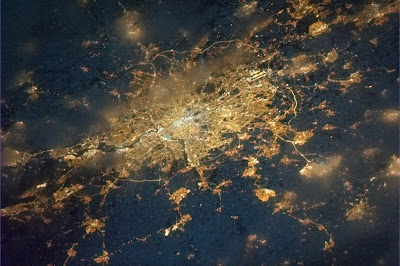Severe storms continue to roll in from the Atlantic
and Britain is in the midst of a winter that has been nothing like a normal
winter. Most likely it’s a sign of times to come.
Scientists - without being able to be exact about timing - have long warned us the changes currently happening to our climate would result in more extreme weather.
Scientists - without being able to be exact about timing - have long warned us the changes currently happening to our climate would result in more extreme weather.
In the midst of this crisis David Cameron, prime
minister, and his cabinet colleagues have been largely content to trade
accusations and shift blame, like water off a duck’s back.
Successive governments have done little to plan for a
changing climate and the prime minister's bizarre finger pointing underlies how bankrupt
his government has become when faced with a challenge of global significance.
His pre-election promise to deliver one of the greenest governments ever has been consistently and systematically dismantled.
Environment secretary Owen Paterson's skepticism on climate change – a ludicrous trait for one in such a position – led him to slash 40% from his departmental spend on developing the UK's adaptation to global warming.
The cost of this winter’s flooding episode alone will dwarf the millions saved by spending cuts. Fixing things and preparing for future storms will run into billions - and that's before we count the cost to our farmers and food production.
Back in 2008, following flooding in his constituency, David Cameron stated that with climate change most people “accept that floods are likely to be more frequent”.
Despite government spending on flood defences under the coalition being cut by 27% another minister, Teresa May, described it no less than six times during a Radio 4 news interview as an "inherited" problem. Maybe she meant from Biblical times.
So, is history repeating itself? All that time ago it was God warning the world - and only Noah listened. Today it is the scientists. Our elected politicians clearly have a lot more listening, and soul searching, to do.
His pre-election promise to deliver one of the greenest governments ever has been consistently and systematically dismantled.
Environment secretary Owen Paterson's skepticism on climate change – a ludicrous trait for one in such a position – led him to slash 40% from his departmental spend on developing the UK's adaptation to global warming.
The cost of this winter’s flooding episode alone will dwarf the millions saved by spending cuts. Fixing things and preparing for future storms will run into billions - and that's before we count the cost to our farmers and food production.
Back in 2008, following flooding in his constituency, David Cameron stated that with climate change most people “accept that floods are likely to be more frequent”.
Despite government spending on flood defences under the coalition being cut by 27% another minister, Teresa May, described it no less than six times during a Radio 4 news interview as an "inherited" problem. Maybe she meant from Biblical times.
So, is history repeating itself? All that time ago it was God warning the world - and only Noah listened. Today it is the scientists. Our elected politicians clearly have a lot more listening, and soul searching, to do.












